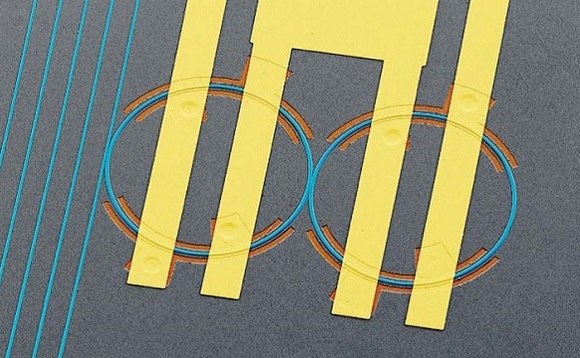
A new integrated photonics platform developed by scientists at Harvard SEAS. Image credit: Loncar Lab/Harvard SEAS.
A group of scientists at the Harvard John A. Paulson School of Engineering and Applied Sciences (SEAS) have designed an integrated photonics platform that can store light and electrically control its frequency in an integrated circuit.
According to the research team, the platform uses microwaves to shift the frequency of light in a programmable manner on a chip.
The team says this novel technology could be used in a variety of applications including optical signal processing, photonic quantum information processing, microwave photonics, optical computing and topological physics.
“This is the first time that microwaves have been used to shift the frequency of light in a programmable manner on a chip,” said Mian Zhang, a former postdoctoral fellow in Applied Physics at SEAS and the first author of the study paper.
According to researchers, they used lithium niobate to fabricate high-performance optical microstructures. Lithium niobate is a material known to possess powerful electro-optic properties.
In a previous study, the same team – led by Professor Marko Loncar, the Tiantsai Lin Professor of Electrical Engineering – had showed that it is possible to propagate light through lithium niobate nanowaveguides with little loss. The team also demonstrated ability to control intensity of light with on-chip lithium niobate modulators.
In the current study, the team attempted to build a “photonic molecule” with two distinct energy levels using coupled lithium niobate micro-ring resonators. They eventually succeeded in building such a molecule.
They demonstrated controlling the molecule by external microwave excitation, and showed that it is possible to precisely control the phase and frequency of light with programmed microwave signals, using concepts of canonical two-level systems.
The team now plans to use the same architecture to develop lower-loss optical waveguides and microwave circuits to achieve even higher efficiencies. That would eventually enable researchers achieve a quantum link between optical photons and microwave.
The findings of the study are published in journal Nature Photonics.
